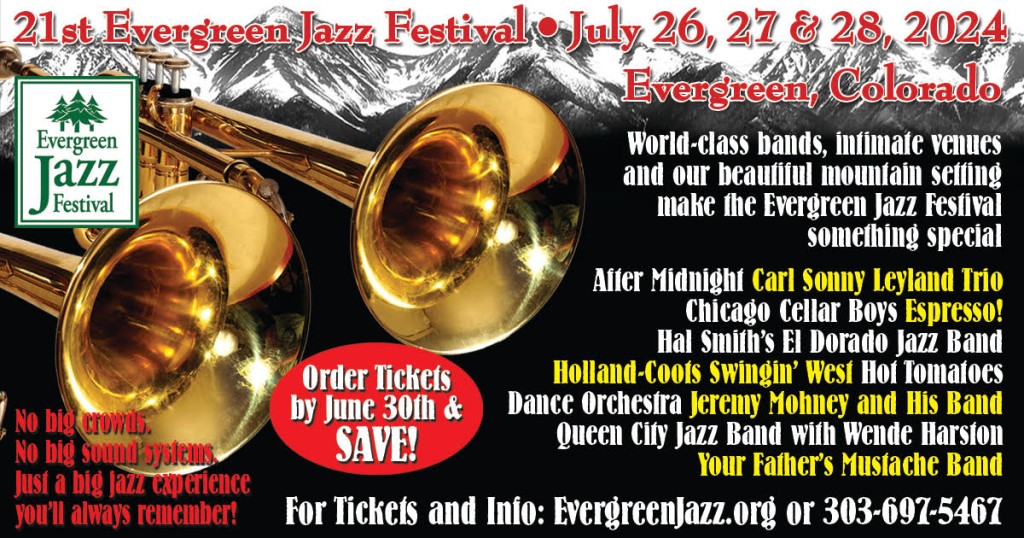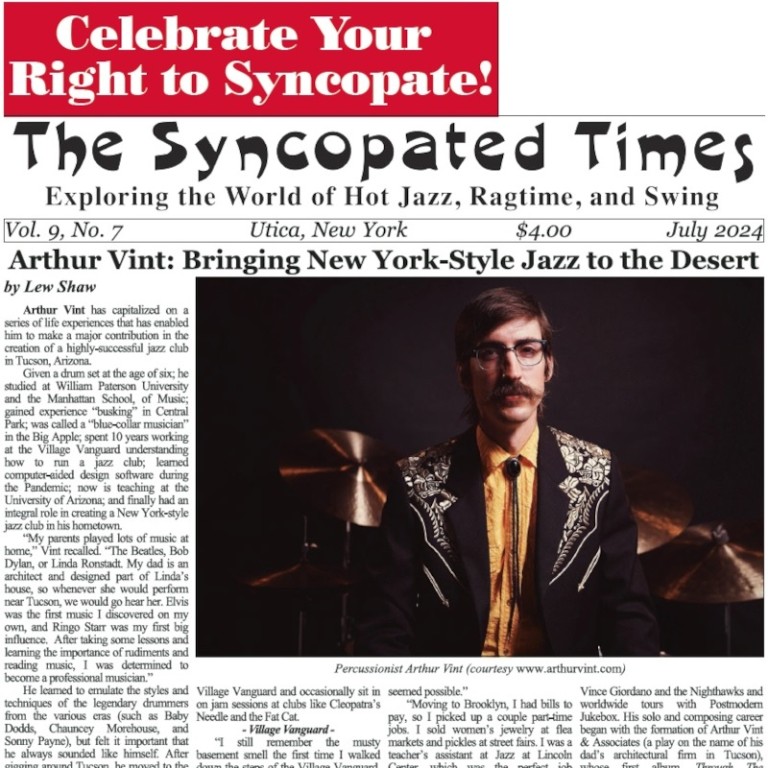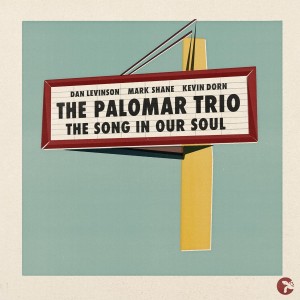Multi-talented Ramona S. Baker is the daughter of Clint Baker (“Preserving the Fire of Early Jazz,” TST, June 2020) and sister of Riley Baker (“Swingin’ in the Golden State,” TST, September 2020). She is a pianist, historian, collector, artist, and a contributing writer to The Syncopated Times.
Hal Smith: Many of your articles for The Syncopated Times, your blog, and your frequent posts on Facebook concern relatively obscure figures in ragtime and popular music from 1890 through 1920. What sparked your interest in these particular composers and performers?
Ramona Baker: Well, they seemed to be rather understudied in the field of studying early recordings. I had become frustrated that no research had been done on important background figures like Eddie King and Fred Hylands. It became my mission to find where these folks fit into the history that is often neglected.
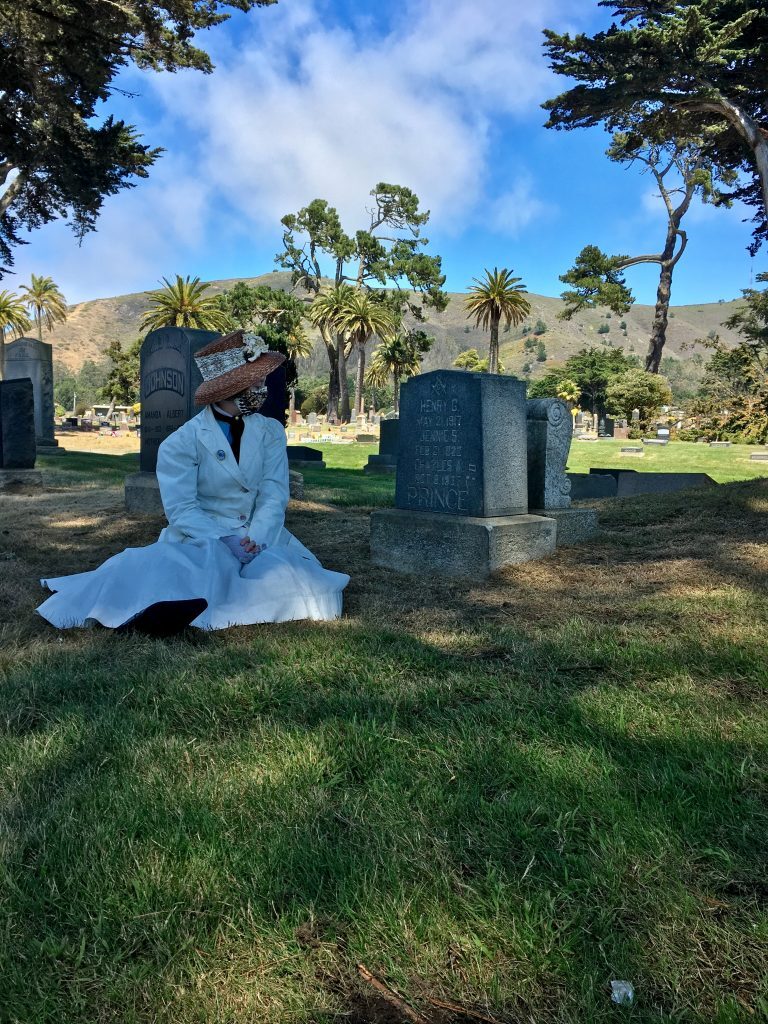
Besides Fred Hager, Justin Ring and the lesser-known people you have written about, who are some of your favorite composers?
My favorite composer would have to be Arthur Pryor. Every new piece I hear by him is so distinct and spontaneous. His composition style never becomes tiresome. It was said that many members of Sousa’s band became frustrated with the eccentricity and difficulty of Pryor’s pieces, so much so that this was part of the reason he went and started his own band. Such stories as this warm my heart. Others that I am particularly fond of include Louis Moreau Gottschalk, Tom Turpin, J. Fred Helf, Arthur Marshall, and Ben Harney.
Who are some of the ragtime performers you like best?
There isn’t anyone who knows vocal ragtime and fashion more than Sean Sharp. He’s definitely my favorite modern performer of ragtime. Of course the period performers I enjoy are early recording artists, some of them being Len Spencer, Vess Ossman, Fred Hager’s Orchestra, Arthur Pryor, Fred Hylands, Arthur Collins, and Edward Issler (if he counts as a ragtime performer!).
 How old were you when you first became interested in music?
How old were you when you first became interested in music?
My dad tells me that I have been musical since birth. Before I can remember, I was whacking drums in distinct time. Before I was 10 years old I got a flute at our local flea market and taught myself to play it, with, as my parents tell me, an unusually smooth and ideal tone. I took up the piano at age 11.
How did your family assist you to become a musician?
Well, they just encouraged whatever instrument and genre that I decided to jump into. Thankfully both my parents were very encouraging with whatever it was I decided to do.
You are also highly respected as a ragtime pianist. Was there a particular performer who inspired you to take up that instrument?
There are many young pianists my age who have been inspired to play piano by the great Tom Brier. I am proud to say that I was one of those kids. Watching all his videos all over the internet I was intrigued by his expert skill and spirit when playing ragtime. My mother also played a few rags on our piano when I was growing up. I remember being fascinated by the age of the pieces my mother was playing, one of them being “Maple leaf Rag.”
Are there other pianists who have influenced you?
 I have always been very fond of studio pianist Frank P. Banta. I had heard his name for several years and he seemed to be on more and more records the more I searched for them. His playing seemed very similar to how I naturally played. He also had perfect pitch as I do, which was ever more relatable. As much research as I’ve done on studio pianist Fred Hylands, there’s something so sweet and unusually genuine about Banta’s playing. He tended to make many mistakes, but somehow kept things together.
I have always been very fond of studio pianist Frank P. Banta. I had heard his name for several years and he seemed to be on more and more records the more I searched for them. His playing seemed very similar to how I naturally played. He also had perfect pitch as I do, which was ever more relatable. As much research as I’ve done on studio pianist Fred Hylands, there’s something so sweet and unusually genuine about Banta’s playing. He tended to make many mistakes, but somehow kept things together.
Of course I wouldn’t be where I am now without Virginia Tichenor with her father Trebor Tichenor’s touch. She is one of my favorite people, and she was my piano teacher, something I will ever be proud of.
You have a large photo of pianist Wally Rose in your music room. Has he been an influence on your piano playing?
Wally Rose was one of the first ragtime pianists I heard, as my father worked with him toward the end of his life. His playing is a little too straightforward for me but I do very much enjoy listening to his records with Lu Watters and Turk Murphy.
Can you list some of the places you have performed—festivals, concerts, house parties and so on?

Every year since 2012 I’ve performed at the West Coast Ragtime Festival. From 2012 to 2018 I played at the Sutter Creek ragtime festival. In 2016 I took my first trip to the Midwest with Virginia Tichenor to accompany Max Morath onstage at the Scott Joplin Ragtime festival. I’ve played at the 7 Mile House in Brisbane, California, and even for a group of protesting nudists in the Castro District!
The Baker “Family Band” was seen and heard on a prerecorded video that was presented as a monthly concert for AFCDJS in San Diego. Did you expand your repertoire to include jazz classics for that performance?
Unfortunately I did not learn any special jazz era tunes for this concert. But as of now, I have been wanting to learn more 12-bar blues pieces, as this form goes back into the 19th century as it has long been said.
Your dad said that you have been learning songs that were played in Storyville in New Orleans. Can you mention some of those tunes?
Thankfully, bandmasters like Charles Prince took it upon his band to record such New Orleans folk rags as “Whoa! You Heifer” and “Dixie Queen,” both of which were mentioned in many stories told by Storyville musicians. I play several other New Orleans folk rags, many of which were also likely played by such musicians as Jelly Roll Morton and Freddie Keppard. “Dats It” (1903), “A Dingy Slowdown” (1900), “Get Your Habits On” (1898), and “Roustabout Rag” are a few more.

In addition to your writing and performing, you also have a wonderful talent for drawing. Your cartoons featuring Fred Hager, Justin Ring, Scott Joplin, Ben Harney and others have appeared frequently on Facebook. Have you thought about the possibility of publishing the cartoons, with your own narrative? Perhaps a graphic novel?
I would love to publish them in a book much like those of Robert Crumb’s. His various sketchbooks have been compiled in several volumes of books, and someday I’d like to do a similar thing. A book I’d love to compile is one that visually documents the story of Fred Hager and Justin Ring. They seem to have a story that deserves to be told to folks outside of music history and record collecting. Fred Hylands is fascinating, but his story gets rather depressing toward the end.
Drawing these cartoons is my way of thinking things through and getting a better understanding of recording stars and history in general. I also like to introduce others to record collecting through humorous visuals. There isn’t enough humor and realism in the world of record collecting, so through the cartoons I hope to bring these aspects to light. These folks were humans like all of us, so I depict them as they were.
Was your drawing style influenced by Richard F. Outcault, Charles Dana Gibson, or other artists who were prominent during the last years of the 19th Century?
Well, I take from a variety of styles and artists. I am very fond of ancient and classical art, such as that of the Minoan culture of ancient Greece, and the Dutch masters of the 17th century. I enjoy the folksy and grotesque nature of many cartoonists for sheet music covers and postcards of the ragtime era. Such cartoonists I am often inspired by are Aubrey Beardsley and Heinrich Zille.
I could go on and on about my artistic inspirations. For many it might come as a surprise that I’m not particularly fond of impressionistic artwork of the 19th century, I much prefer older styles that show attention to detail and patterns. I enjoy artists like James Tissot, but something about his pieces doesn’t carry the exact aesthetic that I prefer.
Do you have an ultimate goal as a writer/performer/artist?
 No. But the one thing that really could be considered a goal is that I always hope to get the compliments and formal permission from descendants of these recording stars and musicians to continue my research and cartoon depictions of them. Nothing is more gratifying as the descendants of Fred Hylands greatly approving of all the research I’ve done on their “Uncle Fred.”
No. But the one thing that really could be considered a goal is that I always hope to get the compliments and formal permission from descendants of these recording stars and musicians to continue my research and cartoon depictions of them. Nothing is more gratifying as the descendants of Fred Hylands greatly approving of all the research I’ve done on their “Uncle Fred.”
Another thing that has become very important to me within the last few years is the aspect of queer history in recording and early vaudeville. This is a subject that is often uncomfortable to talk about, but I would like to make it more universally spoken of, and not in a negative or awkward manner.
What music-related items make up your collection?
I have all sorts of things; sheet music, disc records, cylinders records of each type (from brown wax to Blue Amberols), record catalogs and advertisements, newspapers, and even personal papers of a few recording stars and ragtime era figures. I don’t collect records that date after 1930. I prefer records from before 1915, but there are odds and ends in disc records that I like of hot jazz.
You are also known for wearing authentic clothing of the period, and not just onstage! What inspired you to adopt a style of dressing that ended just as Jazz music was beginning to catch on?
In the vintage clothing world, there aren’t so many collectors of clothing from before 1920, and those who do certainly don’t wear the style every day. I found that style before the 1920s to be so much more attractive and artistic. It also matches the era of music that I so dearly love.
What literary, musical and artistic projects are you planning for the near future?
 I am currently working on a large project on Justin Ring. I have been communicating with his descendants for a few months now. Not entirely sure where this will go, but it has been a gold mine of information on Ring and fellow early recording stars.
I am currently working on a large project on Justin Ring. I have been communicating with his descendants for a few months now. Not entirely sure where this will go, but it has been a gold mine of information on Ring and fellow early recording stars.
I usually go from one project to the next, my last big project was Fred Hylands, and this time it’s Ring and Hager. I also started a project on recording engineer and inventor Charlie Carson back in February but that came to a halt. Originally I was going to be making a several week long trip to visit his descendants, but then March happened. Hopefully when we can all start to travel again I will resume that project, as only a few weeks of communication proved to be very fruitful.
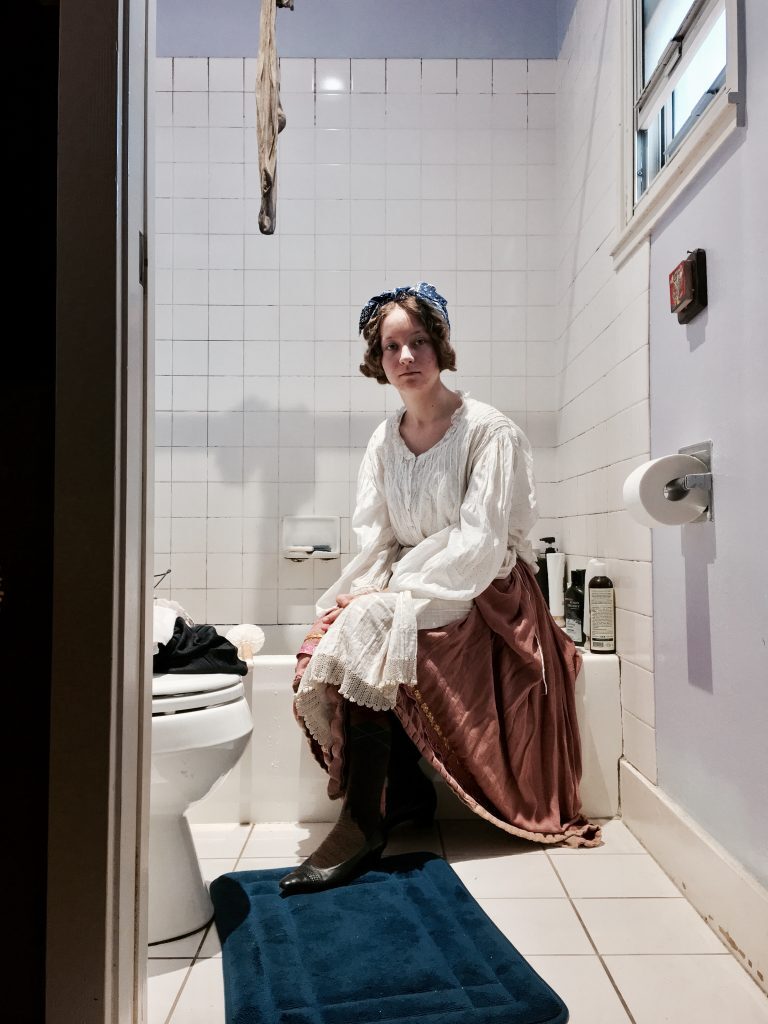
During the pandemic, you have appeared on quite a few solo piano livestreams on Facebook—in addition to your regular posts there and your articles for The Syncopated Times. What are your musical and artistic plans when the lockdowns end?
The first thing will be to continue traveling. I went to New York City with my parents last January and just didn’t want to leave. I plan to visit a few descendants of recording stars as well, which will take trips all over the country. I can’t wait to get back to festivals and see everyone again, as this time away from my friends has at times made me feel so empty that even communicating with many of them has become painful. As I start to go out doing what I usually did before getting stuck at home, I will become more comfortable with the idea of traveling and seeing all my friends.
Ramona Baker is well-known to our readers as the writer of a regular column on unjustly forgotten figures from the early years of the recording industry. Visit her website at theoldrecordgal.blogspot.com.
